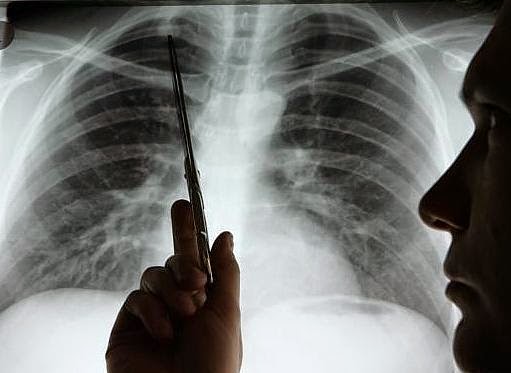7 signs of lung cancer that you should not ignore

Lung cancer is one of the most common types of cancer in men and women throughout the world. According to the Cancer Institute approximately one in 14 men and women in the United States will be diagnosed with lung cancer at some point in their life.

Table of Contents
Initial signs of lung cancer.
In the US, lung cancer has overtaken breast cancer which is the most common cause of cancer death in women. But being aware of risk factors and paying attention to warning signs and symptoms can save your life.
Smoke.
There is a strong relationship between lung cancer and smoking, and about 90% of lung cancer cases are the result of tobacco use. The risk of lung cancer increases the more cigarettes you smoke and the length of time you smoke. It is believed that, among smokers of two or more packs of cigarettes per day, one in seven will die of lung cancer.
Passive smoking.
You don’t have to be a smoker to put your health at risk. Tobacco smoke contains many chemicals that have been shown to be carcinogenic. The risk increases the more you are exposed to cigarettes smoked by other people.
The air pollution.
It is believed that prolonged exposure to highly polluted air can increase the risk of developing lung cancer similar to that of second-hand smokers.
Asbestos fibers and other chemicals.
The use of asbestos is limited or prohibited in many countries, but they were widely used in the past. This also includes exposure to certain chemicals and substances that are used in various occupations and industries such as arsenic, beryllium, cadmium, carbon, silica, and nickel.
Radon gas.
This is a natural radioactive gas that is a product of uranium. It is invisible and odorless and can be reached through the floor and into the house.
Heritage.
Individual genetic susceptibility may play a role in lung cancer. Also, people with a family member with lung cancer are at increased risk of disease.
Lung diseases.
Certain lung diseases are associated with an increased risk of developing lung cancer, such as COPD (Chronic Obstructive Pulmonary Disease) and scarring of the lungs.
Over 65 years of age.
Almost 70% of people diagnosed with lung cancer are over 65 years of age, while less than 3% of lung cancers occur in people under 45 years of age.
The signs and symptoms of lung cancer.
The warning signs of lung cancer are not always present or easy to identify. In many cases, lung cancer may not show any noticeable symptoms in the early stages.
But if you suspect that some of the risk factors apply to you, then early detection can help people at high risk for the disease.
A person with lung cancer may have the following symptoms.
1. Persistent cough or changes in cough.
If you have a cold, the cough should go away after a week or two, but if it persists for a long time, you should see your doctor. If you are a smoker or suffer from a chronic cough, watch for any changes in your chronic cough, for example: more frequent coughing, deeper with a deeper, hoarse sound, coughing up blood, or having more mucus than normal.
2. Difficulty breathing.
If you are short of breath while doing a task that you could have easily done in the past, it may be a symptom of lung cancer. This symptom can occur if the lung tumor blocks or an airway narrows, or if fluid accumulates in the chest.
3. Bone and chest pain.
One of the symptoms may be pain in the chest, shoulder or back area. Lung cancer that has spread to the bones can cause pain at the affected bone sites. If it has spread to the brain it can cause a number of neurological symptoms and headaches. So, listen to your body and if the pain persists and doesn’t go away, go see your doctor.
4. Wheezing.
While wheezing can be the result of asthma or allergies, it can also be associated with lung cancer. If the wheezing persists, visit your doctor to find the cause of it.
5. Changes in voice.
Your voice becomes hoarse and deep, or you notice any other significant change in your voice. While hoarseness can be the result of a simple cold, if it persists then see your doctor.
6. Persistent respiratory infections.
Infections such as bronchitis and pneumonia that do not go away or that come back.
7. Weight loss, loss of appetite, fatigue and weakness.
These are non-specific symptoms that can be seen with many other types of cancer or other diseases, but if the changes are unexplained and persist, go to your doctor to find the cause of it.
How to reduce the risk of developing lung cancer?
- Stop smoking if you haven’t already. If you are a passive smoker, eliminate your exposure to tobacco smoke.
- Test for radon gas in your home– If you suspect you have radon gas in your home, purchase a home radon test kit that can identify increases in radon levels in the home.
- Avoid carcinogens at work– Take precautions to protect yourself from exposure to toxic chemicals at work.
- Change to another lifestyle– There is strong evidence to suggest that regular exercise can reduce the risk of developing lung cancer and other types of cancer. Also eat a high fiber diet with lots of fruits and vegetables. There is also evidence that garlic can reduce the risk of lung cancer.
- The early scan– Chest x-rays are not effective in detecting lung cancer early. However, low-dose CT (Computed Tomography) has been shown to reduce mortality by 20% by detecting lung cancer early.


